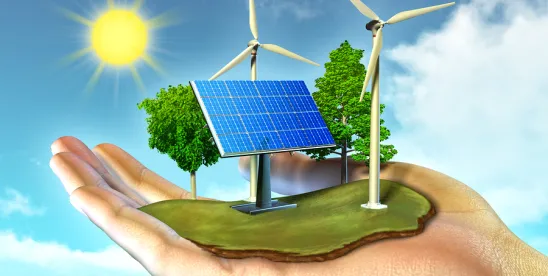This week, California experienced its first blackouts in nearly 20 years. On August 19, the California Independent System Operator (“CAISO”) issued another state-wide flex alert, calling on the public to reduce energy use to prevent rotating power outages. As the state’s heat wave enters its seventh day, the temperature in California today will again reach dangerous levels and will continue to strain the system. While the exact cause of the recent blackouts is under investigation, Assemblyman Jim Patterson pointed to the unreliability of renewable power and the state’s reduced dependence on natural gas.
CAISO called the events this week a “perfect storm,” caused by the heat wave and corresponding spike in demand, simultaneous loss of some sources of power, and inability to import out-of-state electricity. When the sun sets, electricity generated by solar facilities drops, removing thousands of megawatts of solar power from the system while demand, fueled by the record-breaking heat, remains high.
Despite allegations that renewables are unreliable, there is no indication that renewables, particularly solar, failed. CAISO’s data demonstrated that when the blackouts were ordered, solar had performed as expected, while natural gas and wind energy underperformed.[1] Rather, the events of this week have highlighted the misalignment between the speed with which intermittent renewable resources have joined the generation mix and the lag in storage capacity investment. While California has aggressive goals for incorporating storage, storage has not come online concurrently with the rapid growth of wind and solar resources. Additional investment in storage capacity could patch the gap in the event of another “perfect storm” – increased demand, drops in solar or wind output, and unexpected outages. Additional storage capacity could also provide a safety net when California is unable to import electricity due to strain on the entire region, as was the case over the weekend, and could potentially reduce reliance on those out-of-state resources.
Emphasis on continued diversification of the generation mix to include not only additional storage resources but increased on- and off-shore wind could compensate for the evening drop in solar output.[2] The blackout events have also called into question the closure of gas-fired power plants over the years and the planned retirement of additional gas-fired plants in the near future. California will be forced to consider how it can hedge against the risk of the events of this week reoccurring as it works through the renewables transition, which may include maintaining natural gas-fired plants in the near-term.
[1] CAISO declared a Stage 3 Electrical Emergency on August 15, due to increased demand and the “unexpected loss of a 470-megawatt (MW) power plant, and loss of nearly 1,000 MW of wind power.” See Press Release, CAISO, ISO Requested Power Outages Following Stage 3 Emergency Declaration; System Now Being Restored (Aug. 15, 2020), http://www.caiso.com/Documents/ISORequestedPowerOutagesFollowingStage3EmergencyDeclarationSystemNowBeingRestored.pdf. Load was ordered back online 20 minutes after the issuance of the emergency declaration as wind resources increased production. See also CAISO, Supply and Renewables, http://www.caiso.com/TodaysOutlook/Pages/supply.aspx.
[2] See Press Release, American Wind Energy Association, California Renewable Energy Providers Urge State Investments in a More Diverse, Reliable Mix of Clean Energy to Prevent Future Capacity Shortfalls (Aug. 18, 2020), https://www.awea.org/resources/news/2020/california-renewable-energy-providers-urge-state-i.



 />i
/>i

